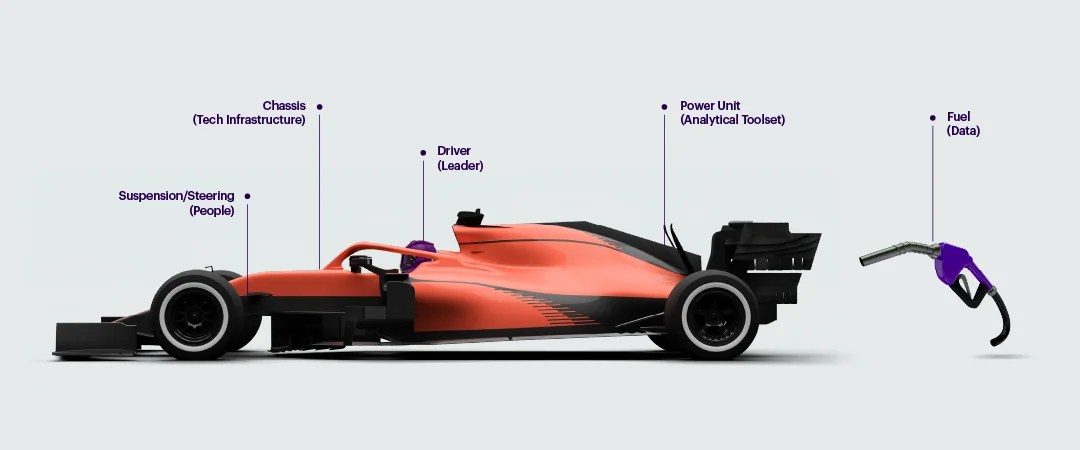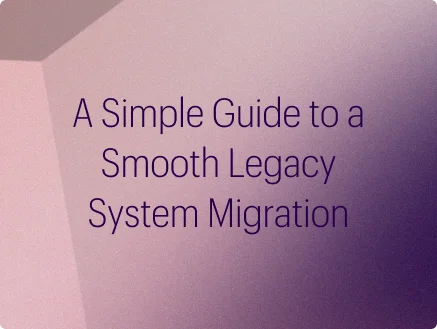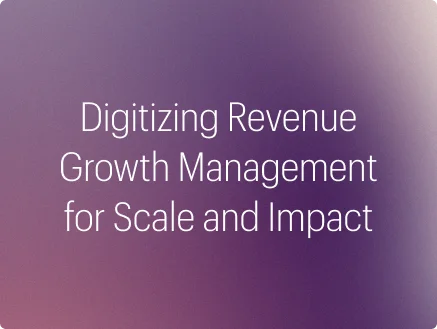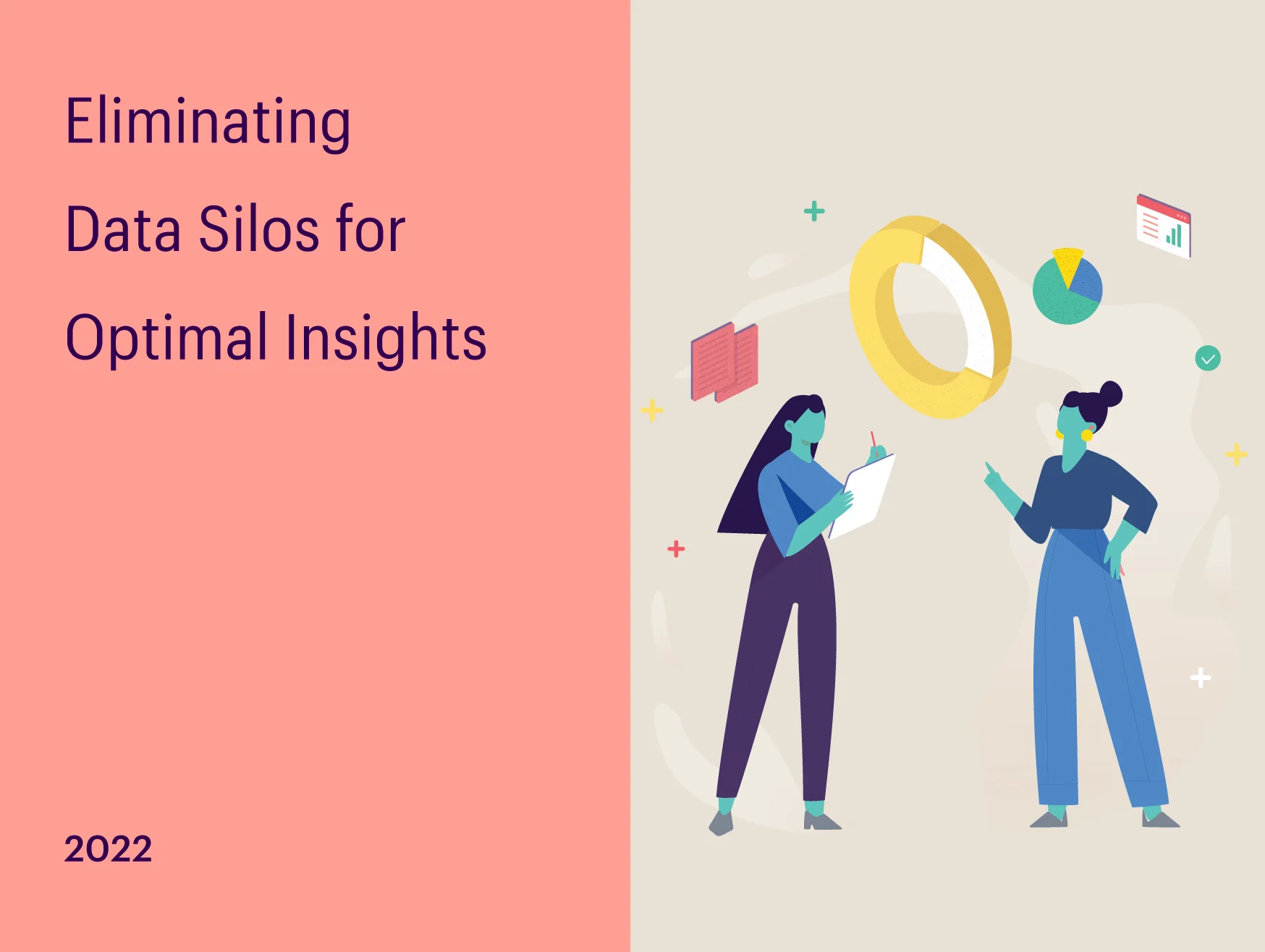Setting up a Data Science Center of Excellence (CoE) is a significant step in the journey to transforming your company into a data-driven organization. A well-established CoE helps you develop better decision-making processes and foster a data-backed culture where innovation can thrive. In more ways than one, we can imagine an analytics CoE as an F1 race car that is supposed to take on business challenges with speed and agility, and have the ability to easily tackle any kind of race. So, how can you ensure that your brand-new car is able to do exactly what you want it to? Here are 5 mistakes to avoid when setting up a data science CoE in your organization.
1. Not spending enough time getting the foundations right
When building a race car, not only is it important to invest in the right chassis, suspension, and power unit, but also the right driver, sponsors, and fuel. Similarly, your CoE too must have the right blend of tech infrastructure, people, analytical toolset, leaders, partners, and data to function as effectively as you want it to. It is important to spend adequate time in the early stages finding the appropriate technology to power your venture and recruiting the perfect people to drive it forward.
Procuring the fuel for a race car may seem straightforward in comparison to knowing what kind of data fits your analytics setup the best, but one must be careful of how the fuel is processed and pushed into the engine. The amount of fuel required, and the fuel-air balance are all factors that affect a vehicle’s performance. Similarly, the effective functioning of your CoE depends on how you process and utilize the data that you have procured. And like some newer-generation race cars that may utilize electric motors to provide a temporary boost on demand, you too can innovatively leverage data to provide an extra competitive edge.

2. Unbalanced reliance on external partners
The best F1 teams tend to effectively leverage both internal and external components to maximize the chances of achieving their goal. It is rare for successful teams to work entirely in-house or outsource all aspects of their team and vehicle. A heavy inward focus can cause CoEs to lose out on a lot of innovation, external thought leadership, continuous improvement, and talent development. This can lead to teams accidentally falling into the same cycles, which can erode their efficiency over time and cause serious misuse of time and resources. If a CoE does not have a culture of continuous improvement and embracing new technologies, the business value it provides will decrease, making it outdated and irrelevant over time. In the world of motorsports, we can just look at the example of how Haas utilizes a power unit manufactured by Ferrari to make the most of its resources. It is best to know where your strengths lie and strategically focus on them while looking outwards for the rest.
On the flip side, heavy reliance on external partners and vendors can expose the CoE to a lot of risks and a lack of options for customization. There may be components like tech infrastructure, analytics tools, or data that the center may need to procure from vendors, and relying too much on external sources for the talent can leave it exposed to sudden and unexpected failures. F1 teams that completely rely on external partners for key vehicle components would find it difficult to customize parts according to their needs or fix any problems that arise unexpectedly. CoEs too could end up in a situation where, due to a lack of in-depth knowledge, they are dependent on someone else to keep their systems functioning.
3. Not setting the right expectations with stakeholders
A CoE can only deliver business value that leads to growth and innovation if its goals match those of the larger organization. Failing to ensure an alignment of goals and overall business strategies can result in initiatives that are not relevant or impactful for the company. There can be no progress if different teams are working towards different ends.
In the world of F1, not all teams have the same goal of winning the championship. Due to budget and time constraints, some teams tend to focus on short-term goals that may eventually build up to larger victories. For example, Aston Martin’s performance in 2023 is something they have been working towards over the past few years through smaller attainable goals like building a better vehicle or hiring the best engineers. When approaching sponsors and partners, these teams must be open and upfront about what they can realistically achieve in the given timeframe.
Just like that, CoEs too must take stock of their capabilities and transparently present what they can aim to achieve in a given timeframe. This can ensure a clear alignment of goals, incentives, expectations, and measurement criteria.
4. Too much focus on data science and analytical rigor
A winning car is one that can handle a variety of tracks and racing conditions—sprint or endurance races, alike. A car built focused solely on achieving top speeds would have difficulty managing corners and sharp turns, thereby losing that competitive edge on a track with multiple twists and turns. And so, it is important for a team to consider the balance between speed and maneuverability when building their car.
In analytics too, there is need for a balanced approach. Building a great model is only about 20% of the task. The remaining requires the CoE to be able to translate the model’s outcomes into business insights, visualize it for business executives, manage internal and external stakeholders, pre-emptively identify roadblocks, and manage incentives, biases, and personal objectives. A CoE that puts too much focus on just the data science aspects of analytics while ignoring the rest would find it extremely difficult to reach its full potential.
5. Poor data governance and creation of data silos
One of the biggest roadblocks to establishing an effective data analytics center of excellence is the decreasing quality of data over time due to poor governance or siloed data. Your CoE should have a robust data governance framework that ensures data quality, accuracy, and security. The quality of the fuel that you put in a race car greatly determines its overall performance. Not ensuring the quality and accuracy of your data could lead to your model providing unreliable insights and negatively affecting decision-making.
You should especially look out for data silos when implementing analytics onto legacy data management systems. Collaboration remains a crucial aspect of F1 racing as well. Only if all the components of a car work in perfect harmony will it perform as expected. In addition, it is only with the support of the driver and the pit crew that a team can win races. Siloed data not only limits collaboration and sharing of best practices across the organization, but also limits the scope of the COE as it would be functioning on incomplete data.


